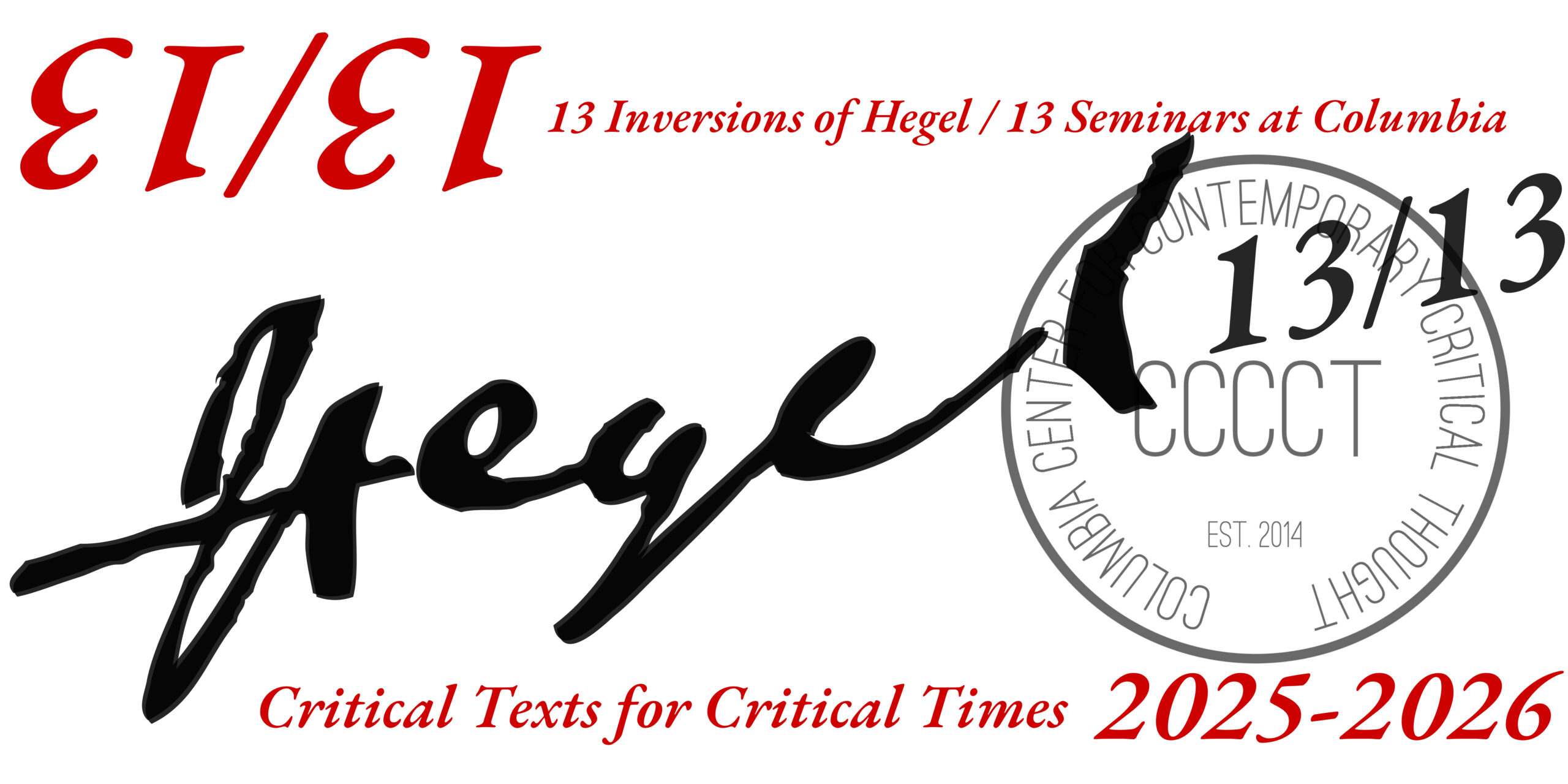Jean-Paul Sartre drew on Hegel and Heidegger to develop his existential philosophy in the 1940s, and Hegel and Marx to reconcile his existentialism with Marxism in the 1950s and 60s. Throughout, he confronted Hegel’s master-slave dialectic, returning to it repeatedly to deal with colonialism, the war in Algeria, and his own critical praxis. In this segment, we turn to Sartre’s engagement with Hegel’s writings.
Core Readings
Jean-Paul Sartre, Being and Nothingness: A Phenomenological Essay on Ontology, trans. Hazel E. Barnes (New York: Washington Square Press, 1992 [1943]), Part III, chs. 1 and 3.
Jean-Paul Sartre, Critique of Dialectical Reason, trans. Alan Sheridan-Smith and Quintin Hoare, 2 vols. (London: Verso, 2004–2006 [1960]).
Jean-Paul Sartre, Notebooks for an Ethics, trans. David Pellauer (Chicago: University of Chicago Press, 1992 [1983]).
Jean-Paul Sartre, “Black Orpheus,” in What is Literature? and Other Essays, trans. John MacCombie, ed. and intro. Steven Ungar (Cambridge, MA: Harvard University Press, 1988), p. 289–330.
Jean-Paul Sartre, “Matérialisme et Révolution I. Le mythe révolutionnaire,” Les Temps modernes, 1re année, no. 9 (June 1946): 1537–1563; “Matérialisme et Révolution II (et fin). La philosophie de la révolution,” Les Temps modernes, 1re année, no. 10 (July 1946): 1–32. Available in English https://brotherwisedispatch.blogspot.com/2018/09/materialism-and-revolution-by-jean-paul.html
Additional Readings
J.A. Podhorodecki, “Self-Certainty and Nothingness: Differences of Situation in Hegel & Sartre,” Philosophia 49, 1671–1679 (2021). https://doi.org/10.1007/s11406-020-00313-3
James Schmidt, “Lordship and Bondage in Merleau-Ponty and Sartre,” Political Theory 7, no. 2 (1979): 201–27. http://www.jstor.org/stable/191178.
Storm Heter, “Authenticity and Others: Sartre’s Ethics of Recognition,” Sartre Studies International 12, no. 2 (2006): 17–43. http://www.jstor.org/stable/23511000.
Jennifer Ang Mei Sze, “Whither Hegelian Dialectics in Sartrean Violence?” Sartre Studies International 15, no. 1 (2009): 1–23. http://www.jstor.org/stable/23511193.
